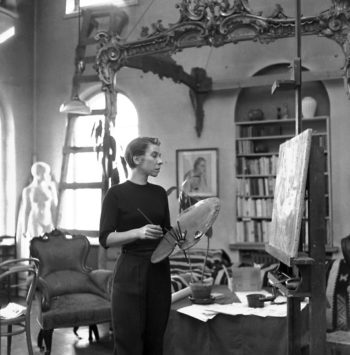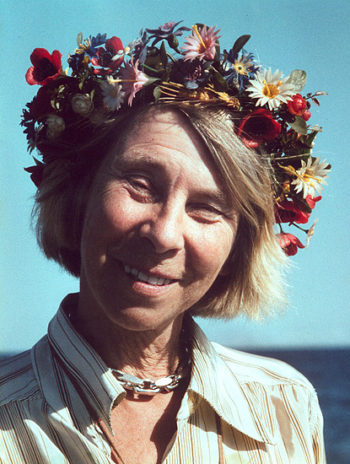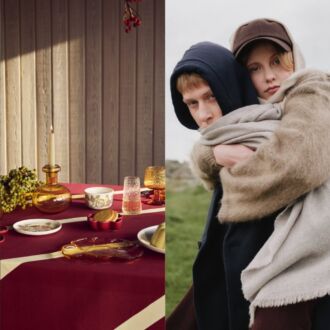Eight decades after the first Moomin book appeared, Tove Jansson’s Moomintrolls are more than just popular – they’re classics.
“We are aiming to establish the Moomins alongside Donald Duck and Asterix,” said the managing director of Moomin Characters Ltd in 1995. The Moomins experienced a boom in the early 1990s, when a Japanese animated cartoon series caused a surge in popularity for the Finnish troll figure in a large part of the world.
The family firm of Moomin creator Tove Jansson began to intensify its marketing, for example by selling, in Japan, a lunchbox with chopsticks decorated with Moomin figures. The Japanese love the Moomins – the first Moomin TV series was produced in Japan in 1972, and a million Moomin books have been sold there.
The characters become classics
The current creative director and chair of the board, Tove’s niece Sophia Jansson, describes the Moomins as having attained classic status, rather than using the term “boom.” “Three generations have already grown up with the Moomins,” she says, “and something happens at that point – the characters become classics.”

An artist from a family of artists: Tove Jansson painting at home in 1956.Photo: Reino Loppinen/Lehtikuva
Moomintroll received his first taste of international success in 1954, when London’s Evening News began publishing a Moomin comic strip drawn by Tove Jansson and later her brother Lars. At the height of its success, the syndicated series was read in 40 different countries. Moomin World, built on a small island in southwestern Finland, attracts thousands of children each summer.
All this began with Tove Jansson’s illustrated Moomin books, originally written in Swedish, one of Finland’s official languages. A total of 13 books appeared between 1945 and 1977; they’ve been translated into 43 languages. The Moomins are at their most original in the books. They encounter catastrophes and adventures and return happily to the idyllic Moomin Valley, whose inhabitants are characterised by sensitivity and tolerance, as well as mischievousness in some cases.
As the series progresses, they enter a more severe climate, try to adapt to uncertainty and ponder the problems of friendship, solitude and freedom.
How the Moomins came to life
Jansson’s parents were artists whose bohemian life in their Helsinki studio and summers spent on a small island in the Gulf of Finland form the background to the Moomin books. The Moomin figure appeared for the first time in public as Tove Jansson’s emblem in an anti-Hitler cartoon which she published in the late 1930s, but it had been born earlier at the Janssons’ summer cottage – as a drawing on the outhouse wall, in fact.

Tove Jansson in a summer incarnation, as photographed by her brother Per Olov.Photo: P.O. Jansson/Moomin Characters
Over her career Jansson related several versions of this story. One of them emerged in a 1984 interview in Finland-Swedish newspaper Ny Tid, republished in English in 2008 together with the original Moomin comic strip Moomintroll and the End of the World (Tigertext):
She and her brother, Per Olov, used to write their thoughts on the outhouse wall, “trying to be profound,” Jansson said. One day Per Olov wrote a quotation from a philosopher (in one version of the story it was Kant, in another it was Schopenhauer and in another the philosopher remains unnamed). Tove wanted to contradict him but the quote “was so impossible to argue with that my only chance was to draw the ugliest figure I could.” That’s how Moomintroll was created.
He was later joined by other characters: Moominmamma, Moominpappa, the philosophical and musical nomad Snufkin, the comically selfish yet timid Sniff, the irresistable Snork maiden, the tiny mischief-maker Little My, and the terrible Groke, who turns the ground around her to ice as she walks.
There are others, as well, with equally intriguing names (for full explanations we refer you to the Moomin books): Hemulens, Fillyjonks, Hattifatteners, Too-Ticky, Misabel, Whomper, the Joxter, the Muddler, the Muskrat, the Mymble and the mystery-shrouded Dweller under the Sink.
“I have not wished to philosophise or educate anyone, but have amused principally myself with my stories,” said Tove Jansson, who also gained prominence as a painter and a prose writer.
Writer, painter and illustrator Tove Jansson
|
By Pekka Tarkka and Peter Marten, updated February 2025



